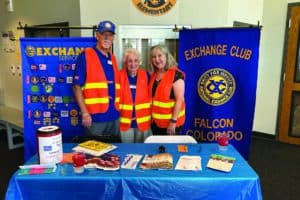Walking the brick-paved streets of Colonial Williamsburg is like stepping back to the time of our nation’s birth.From 1699 to 1780, Williamsburg was the political and cultural center of Virginia, Britain’s largest colony in the New World. Today, Colonial Williamsburg is a carefully restored outdoor museum comprised of 500 stores, taverns, inns and homes – all tucked away on 300 acres of lush Virginia countryside. Cars are prohibited, making Colonial Williamsburg a tranquil and serene place to visit.Duke of Gloucester Street is the village’s main thoroughfare, where a statue of Norborne Berkeley, Baron de Botetourt, the sixth of seven royal governors of the Virginia colony, gazes upon the walkways and lawns of the College of William and Mary.The stores that line the streets are eclectic.At the Saddlery, a historical interpreter in 18th century-attire demonstrates the use of hand tools used for working with leather. At Barber and Peruke, one can see a display of wigs, known as “perukes” in the 18th century.The Capitol stands at the east end of Duke of Gloucester Street. For 75 years, the Virginia House of Burgesses met in this building to deliberate legislation. Here, on May 15, 1776, the Continental Congress declared “the United Colonies free and independent states.”The Governor’s Palace, a restored two-story brick house with a ballroom and a supper room is situated between the College of William and Mary and the Capitol. It served as the residence for the seven royal governors of the Virginia colony; other occupants included former governors of the Commonwealth of Virginia Patrick Henry and Thomas Jefferson.In 1749, the residence was declared to be in “ruinous condition.” In 1781, the building, which had been converted to a hospital for American soldiers wounded in the Battle of Yorktown, burned to the ground. It wasn’t until 1934 that restoration efforts began.We ended our tour at the Bruton Parish Church, where the names of Thomas Jefferson and George Washington mark the box pews they once occupied. Like the Governor’s Palace, the church served as a hospital for those wounded at the Battle of Yorktown, and again as a hospital for the Civil War’s Battle of Williamsburg.In 1780, the capital of Virginia was moved to Richmond, thought to be less vulnerable to an attack by the British. From 1780 to the 1920s, the historic sites of Williamsburg languished in disrepair. In 1926, the rector of Bruton Parish Church, Rev. Dr. W.A.R. Goodwin, approached John D. Rockefeller Jr. about restoring what had become a sleepy village.Colonial Williamsburg is a few miles from Yorktown, where forces led by Gen. George Washington, Marquis de Lafayette and French Gen. Comte de Rochambeau were victorious over the British Army. The surrender of the British brought an end to the American Revolutionary War.Another nearby town, Jamestown, the ill-fated settlement founded in 1607 by Captain John Smith and 107 other members of the Virginia Company, celebrates its 400th anniversary this year.The three areas represent the sacrifices made by thousands of men and women who held the unique belief that ordinary people can govern themselves.





